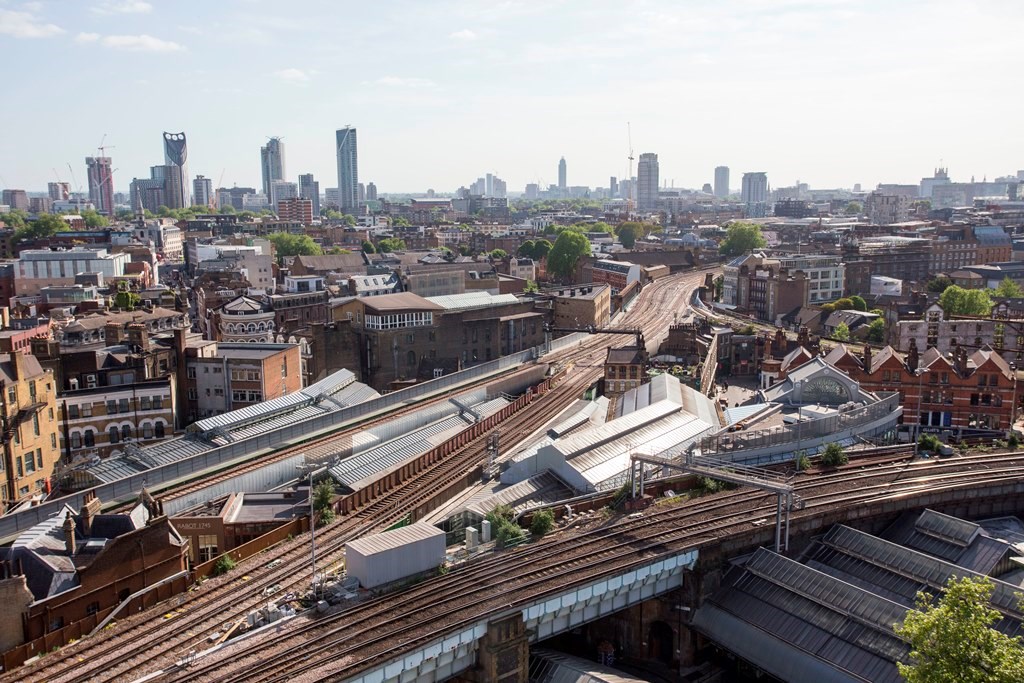Wednesday 24 Jul 2019
South East route gets ready for record-breaking heatwave on Thursday 25 July
- Region & Route:
- Southern
- Temperatures across London and the South East are forecast to reach 37°C on Thursday and steel rail temperatures could rise to well over 50°C.
- Network Rail has activated its ‘extreme weather action teams’ (EWATs) across the South East and passengers are advised to check before they travel.
- To reduce the risk of buckling and to keep passengers safe, we have to introduce speed restrictions which means fewer trains can run and they’re likely to be much busier and take longer to complete their journeys.
Our network is made of 20,000 miles of steel track, which absorbs heat easily and metal rails in direct sunshine can exceed 50°C. When steel becomes very hot it expands and if there is no room for the rail to expand further, this can cause the rail to buckle. If rails buckle, the line has to be closed for repair before trains can run again.
In some locations, we may have to introduce speed restrictions during the hottest part of the day at vulnerable locations as slower trains apply lower forces on the track and reduce the likelihood of buckling.
With extremely hot weather forecast for Thursday 25 July, Southeastern will be running significantly fewer services that day. Many trains will be much busier than usual and take longer to complete their journeys; particularly on longer-distance routes.
John Halsall, Southern region managing director, said: “Keeping passengers safe and moving are our top priorities during this heatwave. That’s why we sometimes have to put speed restriction on to prevent our rails, that can be over 20oC higher than air temperatures, from buckling which can derail a train and cause huge delays.”
Thameslink and Southern will also be running a reduced service with speed restrictions in place across Sussex and Kent. Passengers are advised to carry a bottle of water with them and not board a train if you feel unwell.
Online journey planners have been updated with details of which trains will be running and if you’re planning to travel on Thursday 25 July, please allow extra time for your journey and check before you travel to make sure your train is running.
Notes to Editors
- Since the last hottest summer in 2003, in 2018, we reduced the number of buckled rail incidents by 83%.
- When installing our steel rails, we use a process called stressing to protect against buckling. Stressing the rails allows us to set the range of temperatures the track can comfortably cope with. Stressing our rails to cope with higher summer temperatures would mean making them less able to cope with low temperatures during the winter. Our rails have a stress-free temperature of 27oC, the average summer rail temperature in the UK. You can find more info here - https://www.networkrail.co.uk/why-rails-buckle-in-britain/
- Long periods without rain can mean the ground underneath the tracks dries out and shrinks, creating pothole-like cracks. Much like on the roads, trains can’t drive at full speed over these defects and have to slow down to keep passengers safe.
- Our teams work hard all year round to reduce minimise the disruption caused by hot weather. You can find more information about what we do here - https://www.networkrail.co.uk/running-the-railway/looking-after-the-railway/delays-explained/buckled-rail
- More information on climate change and weather resilience on the railway is available here - https://www.networkrail.co.uk/communities/environment/climate-change-weather-resilience/
Contact information
Passengers / community members
Network Rail national helpline
03457 11 41 41
Latest travel advice
Please visit National Rail Enquiries
Journalists
Leonard Bennett
Leonard.Bennett@networkrail.co.uk
About Network Rail
We own, operate and develop Britain's railway infrastructure; that's 20,000 miles of track, 30,000 bridges, tunnels and viaducts and the thousands of signals, level crossings and stations. We run 20 of the UK's largest stations while all the others, over 2,500, are run by the country's train operating companies.
Usually, there are almost five million journeys made in the UK and over 600 freight trains run on the network. People depend on Britain's railway for their daily commute, to visit friends and loved ones and to get them home safe every day. Our role is to deliver a safe and reliable railway, so we carefully manage and deliver thousands of projects every year that form part of the multi-billion pound Railway Upgrade Plan, to grow and expand the nation's railway network to respond to the tremendous growth and demand the railway has experienced - a doubling of passenger journeys over the past 20 years.
Follow us on Twitter: @networkrail
Visit our online newsroom: www.networkrailmediacentre.co.uk

